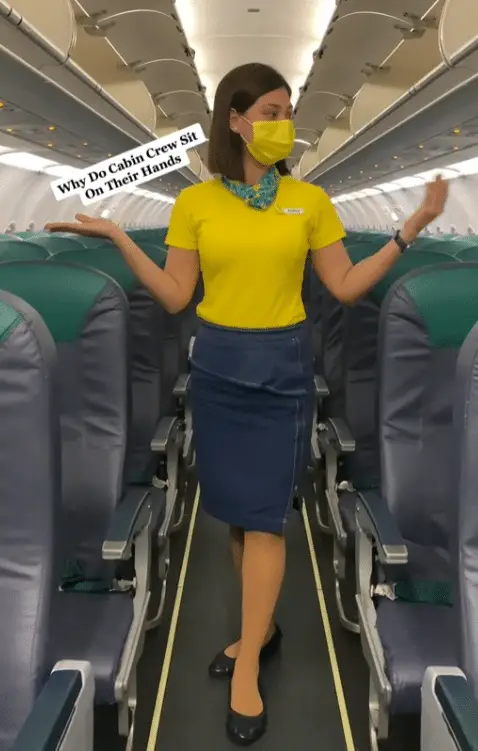In the realm of air travel, the responsibilities of flight attendants extend well beyond serving food and beverages. These highly trained professionals play a crucial role in ensuring the safety and well-being of all passengers on board. One particular aspect of their safety protocol that often raises curiosity is the bracing position adopted during takeoff and landing.

What is the Bracing Position?
Passengers may notice flight attendants strapping into their jump seats and adopting a specific posture—often sitting on their hands—during critical phases of flight. Henny Lim, a flight attendant with Cebu Pacific, recently shared insights about this practice in a viral TikTok video, clarifying its purpose.
The bracing position involves several key steps:
- Fastening Seatbelts: Ensuring that seatbelts are securely fastened.
- Sitting Upright: Maintaining an upright posture to prepare for potential impact.
- Hand Placement: Placing hands on thighs with thumbs tucked in and arms relaxed.
- Feet Positioning: Keeping feet flat on the floor.

Purpose of the Bracing Position
The primary goal of the bracing position is to minimize bodily movement during emergencies, thereby reducing the risk of injury upon impact. By securing themselves in a rigid posture, flight attendants position their bodies to better withstand the forces experienced during a crash landing.
In addition to this physical preparation, flight attendants also engage in what Lim refers to as a “silent review.” This mental exercise involves reviewing safety equipment, door operations, commands, and observing outside conditions to prepare for any potential emergencies.
Insights from Regulatory Authorities
Regulatory bodies, such as the Federal Aviation Administration (FAA), stress the importance of the bracing position. An FAA memo outlines two critical functions:
- Reducing Flailing Limbs: This minimizes the risk of injuries caused by limbs striking other objects or surfaces during an impact.
- Prepositioning the Body: By positioning the body—especially the head—against surfaces likely to be impacted during a crash, the severity of injuries can be significantly reduced.

Flight Attendants’ Perspectives on Safety
Henny Lim’s explanation reflects a broader trend of flight attendants using platforms like TikTok to educate the public about safety protocols. Fellow flight attendants, like Destanie, have also shared engaging stories, reminding viewers of the importance of adhering to safety rules and respecting the professionalism of cabin crew.
Challenges and Rewards of the Job
Flight attendants face numerous challenges, including managing difficult passengers and operating in high-pressure situations. However, many, like Destanie and Esther Sturrus, express gratitude for the opportunities their roles provide. Despite the challenges, their unwavering commitment to passenger safety remains a top priority.